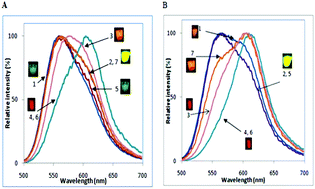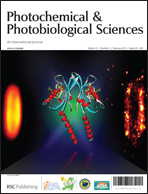Multi-color bioluminescence is developed using the introduction of single/double disulfide bridges in firefly luciferase. The bioluminescence reaction, which uses luciferin, Mg2+-ATP and molecular oxygen to yield an electronically excited oxyluciferin, is carried out by the luciferase and emits visible light. The bioluminescence color of firefly luciferases is determined by the luciferase sequence and assay conditions. It has been proposed that the stability of a protein may increase through the introduction of a disulfide bridge that decreases the configurational entropy of unfolding. Single and double disulfide bridges are introduced into Photinus pyralis firefly luciferase to make separate mutant enzymes with a single/double bridge (C81–A105C, L306C–L309C, P451C–V469C; C81–A105C/P451C–V469C, and A296C–A326C/P451C–V469C). By introduction of disulfide bridges using site-directed mutagenesis in Photinus pyralis luciferase the color of emitted light was changed to red or kept in different extents. The bioluminescence color shift occurred with displacement of a critical loop in the luciferase structure without any change in green emitter mutants. Thermodynamic analysis revealed that among mutants, L306C–L309C shows a remarkable stability against urea denaturation and also a considerable increase in kinetic stability and a clear shift in bioluminescence spectra towards red.

You have access to this article
 Please wait while we load your content...
Something went wrong. Try again?
Please wait while we load your content...
Something went wrong. Try again?


 Please wait while we load your content...
Please wait while we load your content...